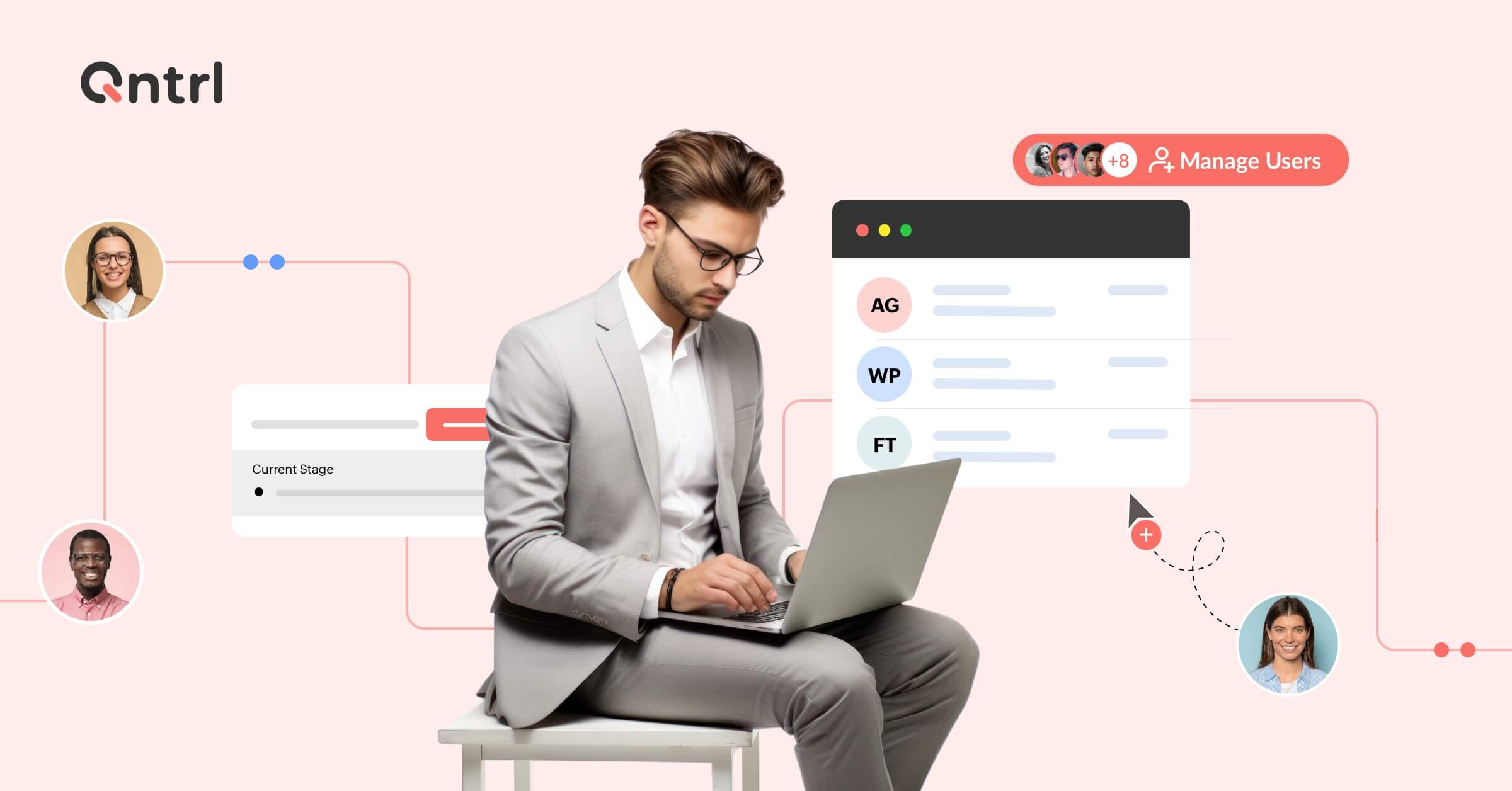The transactional nature of human resources makes it the perfect candidate for workflow automation. Process-heavy departments like HR and people operations have a huge impact on an organization’s bottom line, but all the manual tasks can be cumbersome.
Studies and interviews show that HR leaders spend most of their time in meetings and on administration, followed only by compliance-related tasks. This means HR strategy is left on the back burner, exactly where it doesn’t belong. Manual process management techniques spark inefficiencies and tank productivity and innovation.
Although HR serves to care for an organization’s employees, obsolete processes and manual tasks stop leaders from focusing on these high-value activities. To fix this, you can optimize workflows with workflow automation.
What is HR workflow management?
Any HR process comes with a set of predictable and repetitive tasks. With the right HR workflow process, approval rules, fulfillment tasks, and process alerts can be handled with unlimited task management capabilities. Teams can speed up processes and upgrade their efficiency without compromising on security.
Using a centralized platform, you can decide how processes should move and define everyone's role in the workflow. Stay compliant with standardized practices across geographical locations and accelerate decision-making with the power of automation. Manage the entire employee lifecycle process—from hiring, to onboarding, to leave requests, to performance reviews, all the way through offboarding—with easy access and trackability.
Why do manual approaches create bottlenecks?
Many organizations adhere to a document-driven approach to managing their HR processes. All approvals and requests must undergo several rounds of reviews in order to be processed.
Without workflow optimizations, HR processes will never be streamlined.
If you don’t automate administrative tasks, competing in today’s marketplace will prove more and more challenging. When your working hours are consumed by manual processes, there's not enough time left for strategic initiatives, such as employee retention and workforce planning.
Benefits of using workflow software automation
Reduce human errors
Cut costs
Increase profitability
Bridge process gaps
Enhance productivity
Improve process efficiency
Boost employee morale
Use cases for HR workflow management and automation
Hiring
While hiring will always involve crafting a job description, sourcing candidates, conducting interviews, and communicating the outcome, there are better ways to optimize the hiring process. Save valuable time finding the best candidates, without detracting from the overall candidate experience, by simplifying scheduling, building talent pipelines, recruiting on the go, and prescreening resumes using workflow automation.
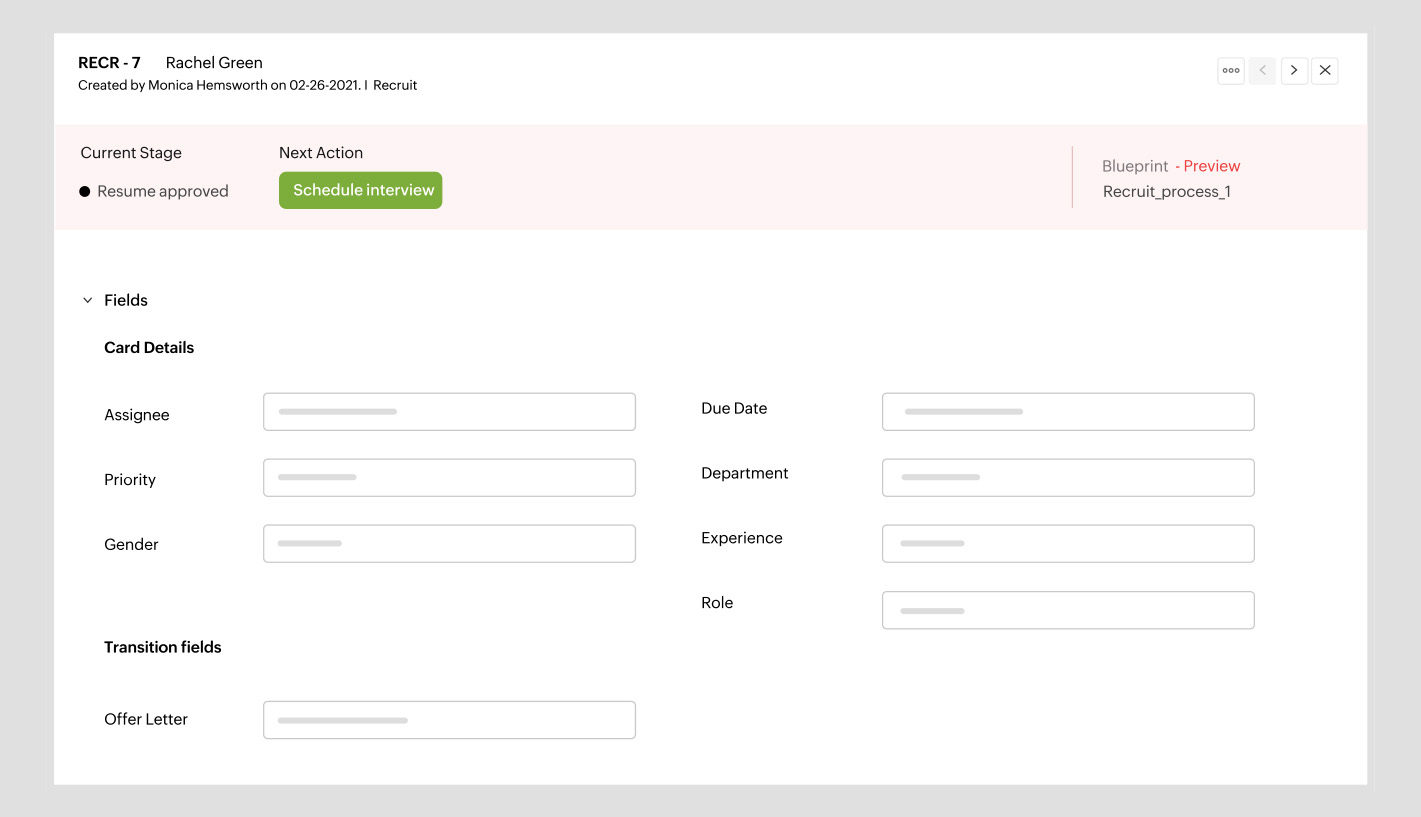
Employee onboarding
New hires can complete and sign their paperwork electronically while workflow automation takes care of sending automated notifications to all stakeholders involved in the process, so everyone stays in the loop. Since every step of the process is processed accurately and consistently, both the HR team and the new hires have a seamless, stress-free experience. Schedule meetings specifically for new hires, pair new hires with a peer, prepare training modules for employees onboarding, and distribute company policies.
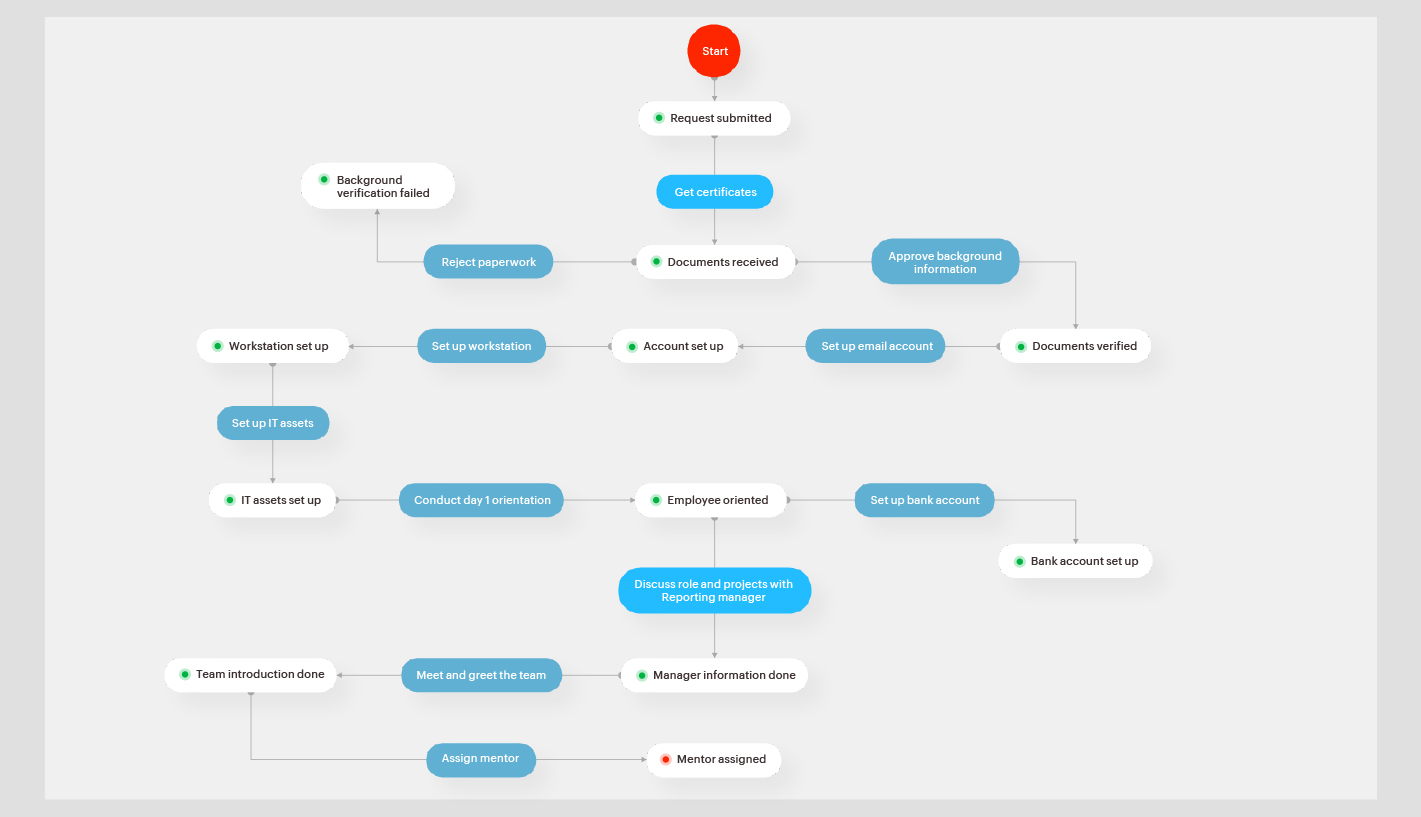
Leave requests
Time-off management is perfect for automation because it’s a huge to-do. Vacation requests can involve back and forth emails or chat messages, unmanageable spreadsheets, and too many sets of eyes. Sometimes, a request is even lost in cyberspace and the employee ends up missing an opportunity to score a good deal on a flight home to see family. Automating leave requests can accelerate the time-off process substantially.
Performance appraisal
Standardizing and automating performance review workflows helps simplify the administration process, so responsible parties can become task assignees, performance review tasks can be listed, deadlines can be met, question form fields can be populated, and reviews can be conducted and reviewed promptly. Set up triggers and customize each element to eliminate manual follow-up on reviews with automation. After automating performance review workflows, employees can revisit their goals and manager feedback at any time.
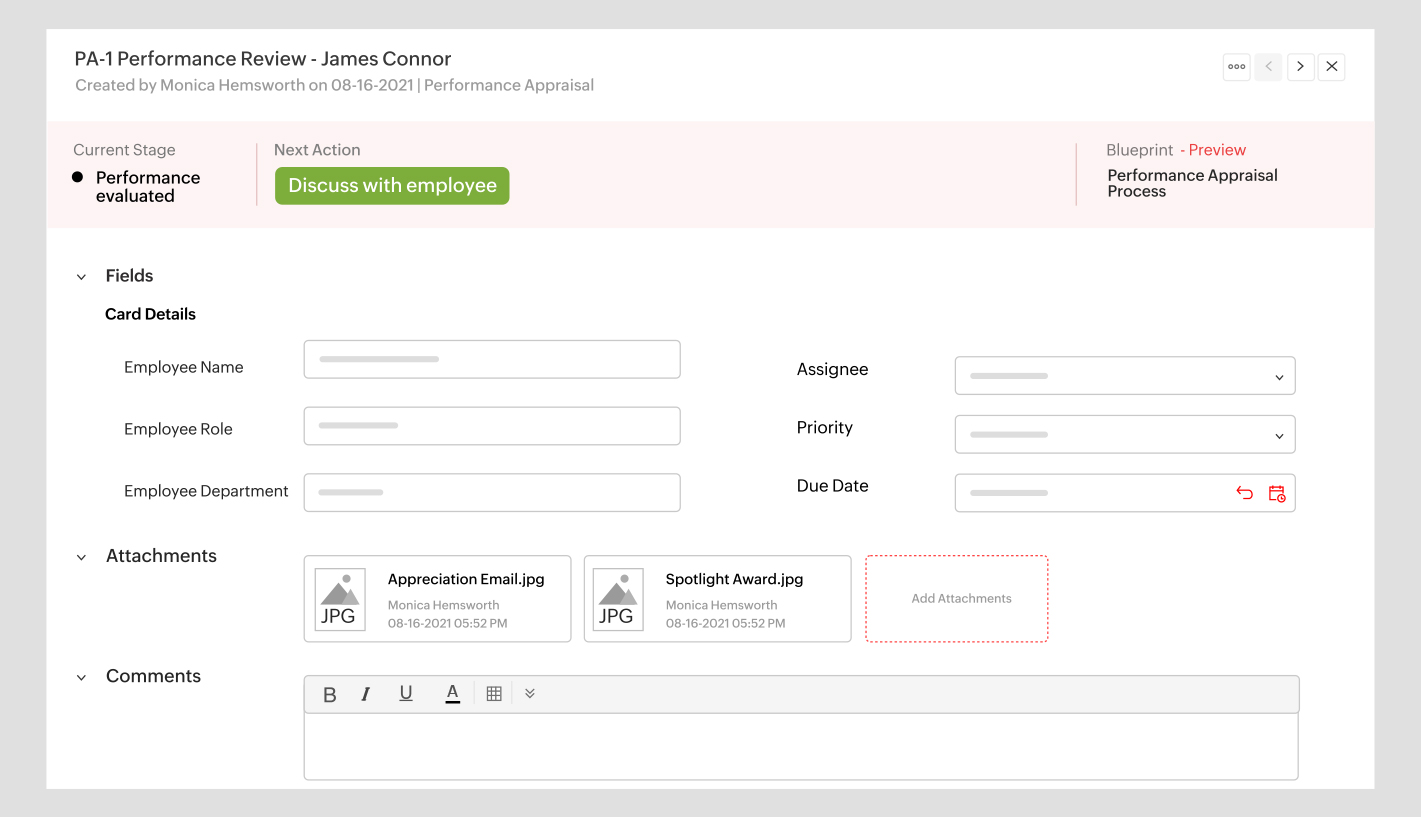
Employee information management
As your business grows, managing employee data will become more difficult if you keep things manual. By automating the process of creating and managing employee information, data retrieval is simpler and human errors are diminished. What’s more, the mishandling of confidential employee information becomes a thing of the past.
Offboarding
The offboarding process takes place when a business severs ties with an employee. It begins whenever either party decides to discontinue the relationship, regardless if there is a period of notice given. Tasks such as informing employees of the offboarding process, the exit interview, disabling employee ID cards or keys, revoking employee login credentials, returning company equipment, and making final payments are involved in the offboarding process, and are tasks that can easily be automated with the right workflow management platform.
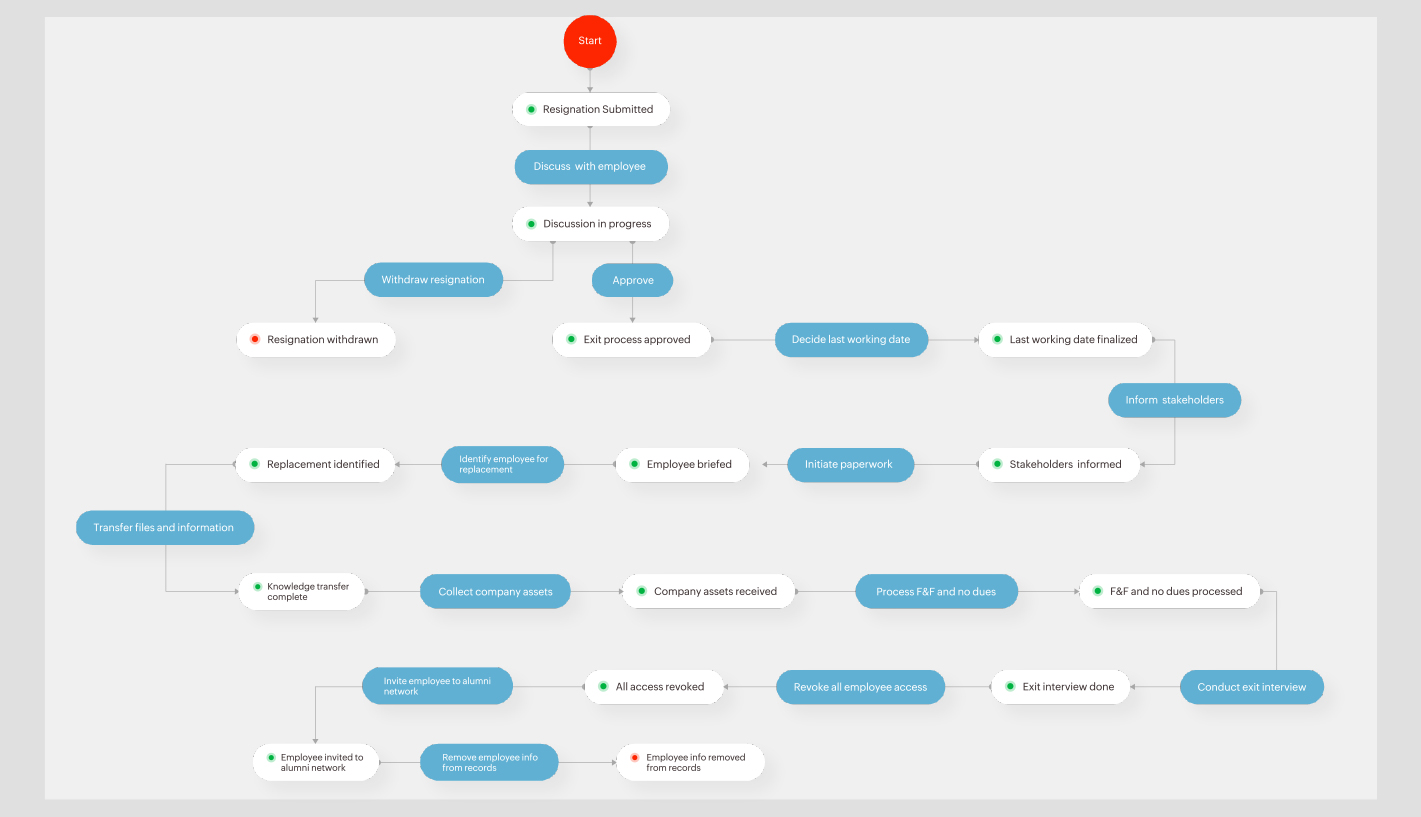
Features to seek out in the best HR workflow tools
Ease of use
Fast implementation
Ready-to-use templates
Integration with third-party tools
Customizability
Scalability to accommodate business growth
Ready to gain visibility, control, and automation of your entire HR department? Give Qntrl a spin today.


